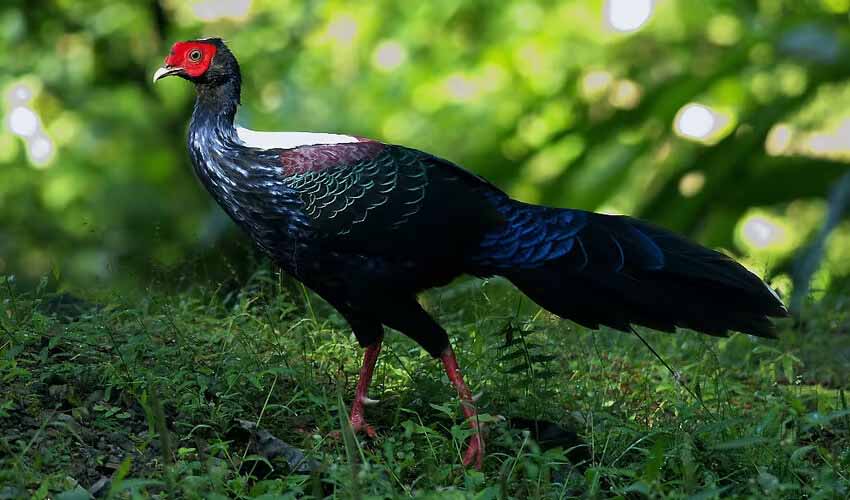Galliformes – Turkeys, pheasants & quails
Galliformes’ ancestors survived a sudden mass extinction of three-quarters of the plant and animal species 66 million years ago
Members of this order are heavy-bodied ground-feeding birds that include turkey, grouse, chicken, quail, and pheasant. These birds are recognized for their stocky builds, rounded wings, and strong legs, which are well-suited to their predominantly terrestrial lifestyle. While many are adept at running and can take flight to escape predators, their flights are generally brief and powerful bursts rather than sustained endeavors.
Most Galliformes have robust feet, equipped with four to five toes that enable them to scratch the ground for various seeds, insects, and leaves. Their diet, consisting mainly of plant material, often includes seeds, fruits, and occasionally invertebrates, which they are adept at foraging from the ground.
Many species within this order have been domesticated and have significant economic importance. The domestic chicken descended from the red junglefowl of Southeast Asia, has been raised for thousands of years for its meat and eggs. The domestication of chickens is believed to have occurred as early as 2000 BC, and since then, chickens have become integral to human agriculture and culture.
Other members of this order, like turkeys, have been domesticated in North America. The wild turkey, which is native to the forests of North America, has also become a symbol of American wildlife and is notably associated with the Thanksgiving holiday.
The male birds in this order often exhibit colorful plumage and ornamental features, such as combs and wattles, which play a role in sexual selection. These features can be used to attract females and are often more pronounced in species with polygamous mating systems, where one male mates with multiple females.
The reproductive strategies of Galliformes vary, with some exhibiting monogamous pair bonds and others being polygynous. Nesting habits can also vary, with some species building nests on the ground hidden among vegetation, while others may nest in trees.
Families in this order
A large family that includes popular gamebirds, habituating a wide variety of native ranges and are generally sedentary
Long-tailed, arboreal birds of Central and South America are generally considered important indicators of habitat quality
Native to America, having ‘toothed’ bill and lack of tarsal spurs forming their separate family
Natively living in Australian regions, they never incubate their eggs using body heat; instead, build mounds to burry eggs for hatching
Highly vocal birds domesticated for food and serve as watchdogs on farms, build nests on the ground but roost in trees at night






